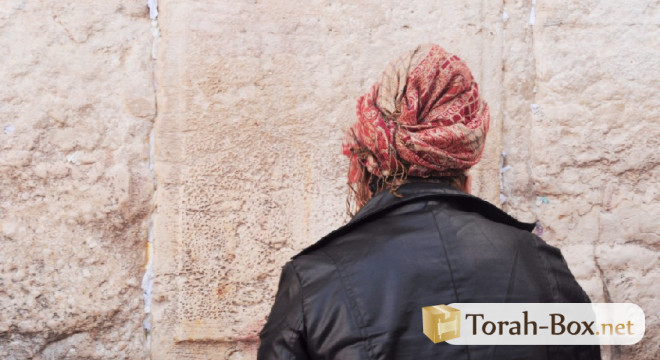
Women
The Woman: The Symbol of Shavuot
Each Jewish holiday has been assigned a distinctive symbol. On Pesach we have the Matzah, on Sukkot, the Sukkah, but on Shavuot, what do we have? As surprising as it may sound, the symbol of Shavuot is ... the woman! Indeed, the very essence of Shavuot is emuna (faith), since it is the holiday celebrating the gift of the Torah. And it is the woman who is the main vehicle and personification of Emuna.
In order to study the question, let us go back to “Yetziat Mitzraim” as well as to Pesach. It is written in the Midrash on Shemot, that it is in the merit of women that the Jewish people were taken out of Egypt. Indeed, when Pharaoh decreed that all male newborns should be killed, the men sank into despair and believed that their end had arrived. What did their wives do? They took mirrors, made themselves beautiful, and rushed to their spouses in order to perpetuate the descent of the Jewish people and prevent Pharaoh from achieving his goal. By their strong faith, they were convinced that, despite the terrible conditions that the Jewish people endured, Hashem was not going to abandon His children. Their pure and honest intentions undoubtedly precipitated the birth of several infants, including Moshe Rabbeinu, as well as the possible exit from Egypt.
But the story does not end there. When donating for the Mishkan, Hashem told Moshe:
"And they will build Me a sanctuary, and I will dwell amongst them" (Shemot 25: 8). Within this sanctuary, the same mirrors that women had used in Egypt were now used to design a sink in which the Kohanim (priests) washed their hands. When the construction of the mishkan (Tabernacle) was completed, Moshe asked Hashem if it was a good idea to have simple mirrors included in the construction of the mishkan (Tabernacle), especially since, these mirrors had been used for purposes that did not seem so holy in the first place... Hashem told Moshe that everything in His Tabernacle was of immense sanctity, but that these mirrors were especially cherished to Him. Thus, by examining the actions of women in Egypt and during the construction of the Tabernacle, we can associate a unique a midda to them (trait of character): emuna, faith.
The concept of “naasseh venishma, “we will do and after we will understand”, is another reason why emuna represents the symbol of Shavuot. Indeed, Hashem asked all the nations of the world if they wanted the Torah before offering it to the Jewish nation. But each one of them had specific conditions. Only the Bnei Yisrael responded that they would accept the Torah without personal benefits, but rather out of love for the truth. Emuna is therefore the very identity of the Jewish people, since it is thanks to that emuna that we accepted to receive the Torah unconditionally.
In short, Shavuot requires us to preserve this identity, and instructs us to receive and follow all the commandments. Including those that we do not understand. This unique ability to believe in the truthfulness of every word of the Torah and to believe that Hashem is fair and good, was undoubtedly instilled in us by the mothers of Israel, as was the case, in Egypt and in the desert.
May we celebrate Shavuot with joy, satisfaction, and faith!
Torah-Box.net Account
To access the entire Torah-Box.net website, sign up for free in less than a minute.
Weekly Parsha
 Candle Lighting - New York
Candle Lighting - New York
Friday January 9th, 2026 at 16:28 *Shabbat ends at 17:33 *
change my location
* Times given as an indication, check the times of your community








